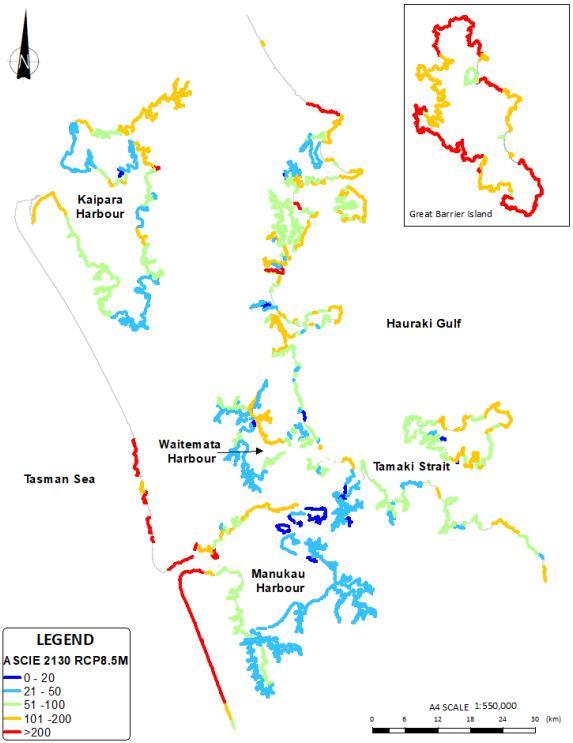What Our Coastlines Could Look Like In 2050? New Coastal Report
The Matakana App
26 February 2021, 8:26 PM
 Omaha Beach now of the local beaches that feel the effects sea level raises - Image The Matakana App
Omaha Beach now of the local beaches that feel the effects sea level raises - Image The Matakana AppOn Tuesday morning, Auckland Council released a report containing some worrying research.
The report, Predicting Auckland's Exposure To Coastal Instability And Erosion, showed that large sections of Auckland's coastline could erode more than 200 metres by 2130 unless strong action is taken on climate change
Stats NZ data shows Auckland has averaged 1.67mm of sea level rise each year since 1899, but the Ministry for the Environment predicts this rate will accelerate, if little action is taken to reduce greenhouse gas emissions..

Colour map of the banded ASCIE distances for cliffs at 2130 adopting the RCP 8.5 M. Photo credit: Auckland Council
The report forecasts sea level rises and subsequent impacts on areas susceptible to coastal instability and/or erosion (ASCIE) across four scenarios:
· Low to eventual net-zero emission scenario (RCP 2.6 M)
· Intermediate-low emissions scenario (RCP 4.5 M)
· High-emissions scenario (RCP 8.5 M)
· Higher extreme scenario, with essentially no controls on emission by 2100 (RCP 8.5 H+)
The research shows that if emissions remain high and we track along the RCP 8.5 M scenario, large areas of Auckland more than 100 metres back from the current coastline will be at risk of eroding or becoming unstable in the next 110 years.
Some cliffs at the entrance to the Manukau Harbour, on the west coast, around Great Barrier Island and in isolated patches of north Auckland, meanwhile, are predicted to retreat or become unstable up to 200 metres back.
Many others are predicted to erode by at least 100 metres, especially in north Auckland, the northern part of Manukau Harbour, around Waiheke Island and in Kaipara Harbour. "ASCIE distances across Auckland cliffs vary, particularly with geological type, exposure and cliff height," the council report reads.
The majority of the west coast and our very own Pakiri Beach, meanwhile, would become unstable or erode more than 100 metres back from the current coastline.
The report says ASCIE for beaches would mainly be caused by storms the next 30 years or so, but sea level rises will become more of a factor over a longer timeframe.
"Under the 2130 RCP 8.5 M scenario, predicted erosion values for beaches across Auckland vary from less than 20m in sheltered harbour coast beaches to more than 190m along the highly exposed shorelines of the outer Hauraki Gulf and west coast," the report says.
"Sea level rise is a major contributor to the high ASCIE values, in some cases adding more than 90m to expected values."
Auckland councillor Richard Hills, chair of the council's Environment and Climate Change Committee, says the new report gives it stronger guidance.


